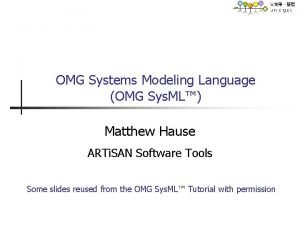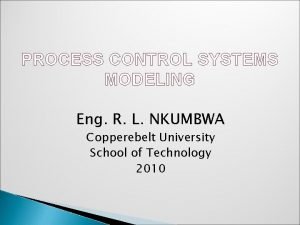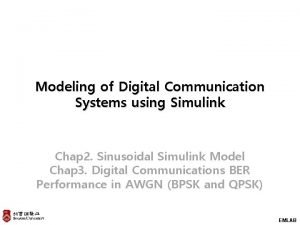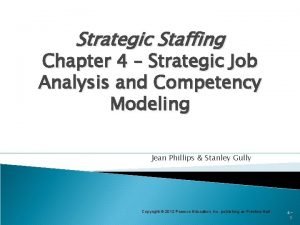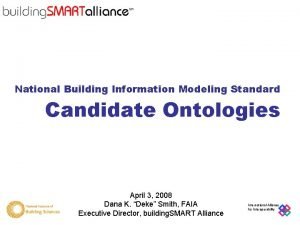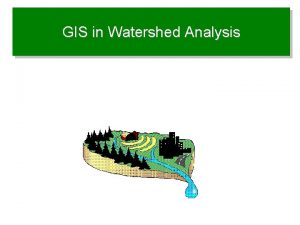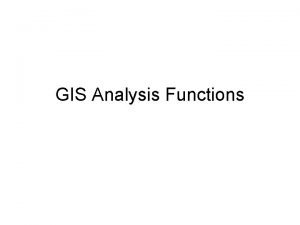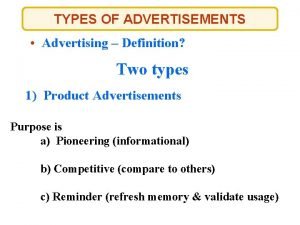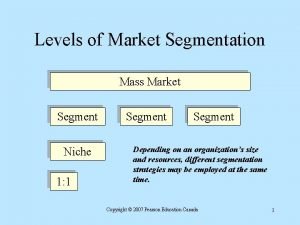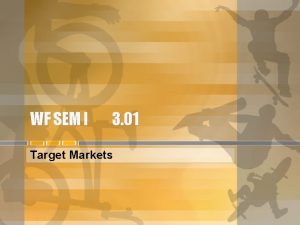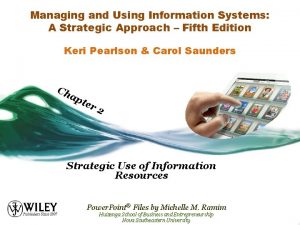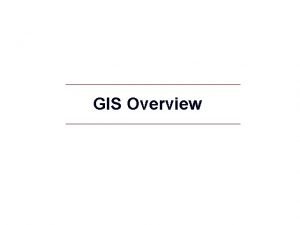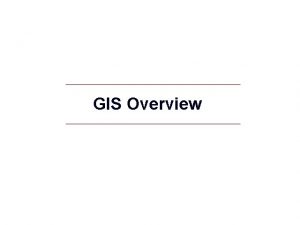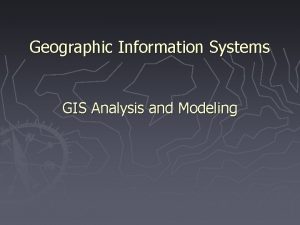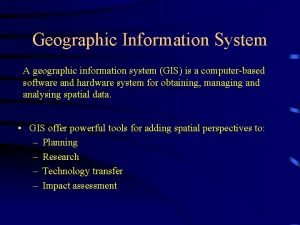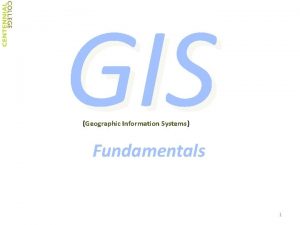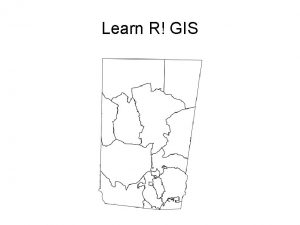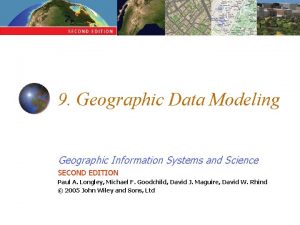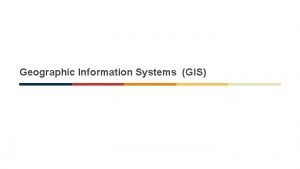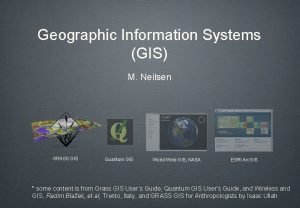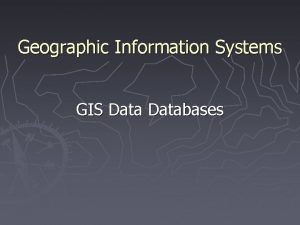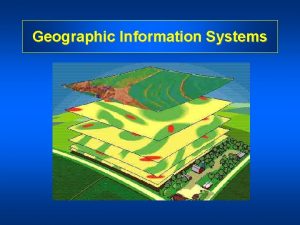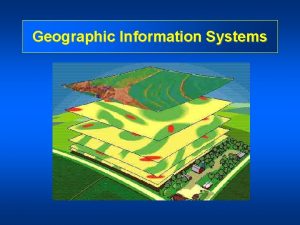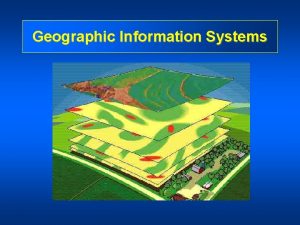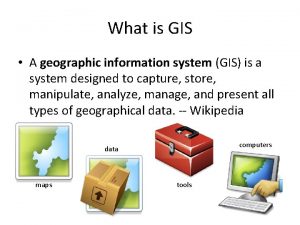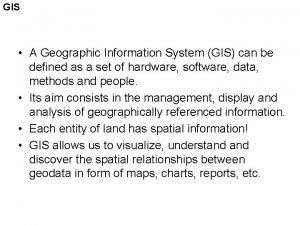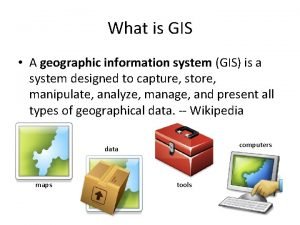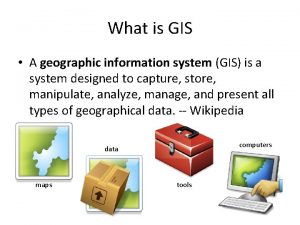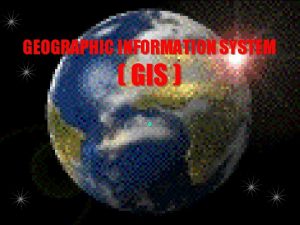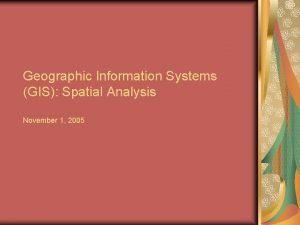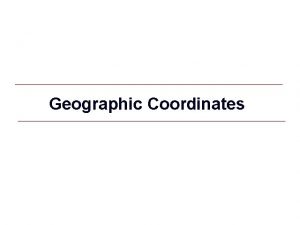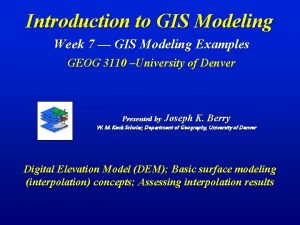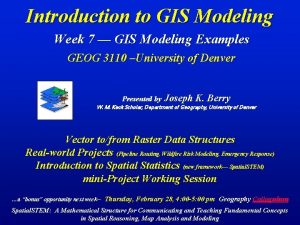Geographic Information Systems GIS Analysis and Modeling 1




























- Slides: 28

Geographic Information Systems GIS Analysis and Modeling

1. Geographic Analysis ► Geographic questions: where, when, why, and how ► The purpose of the analysis is to answer questions about: - what existed at where, when, why, and how - what will happen at where in the future or in other locations

2. Organizing Geographic Data layers (shape file etc. ) ► Feature types: points, lines, polygons ► Object types: geometric or thematic ► e. g. Development streets - line layer 1 water - line layer 2 parcels - polygon layer 1 soils - polygon layer 2

3. Overlay Arithmetic overlay ► Logic overlay ► Weighting input layers ► Raster vs. vector overlay ►

3. 1 Arithmetic Overlay adding layers, subtracting, multiplication, division, etc. ► Raster ► Input data layer A Input data layer B Output data layer

3. 1 Arithmetic Overlay. . ► Arithmetic operation on two data layers using the vector data model Attribute data Spatial data Input data layer A Input data layer B Output data layer

3. 3 Weighting Input Layers Professional experiences ► Expert votes ► ► Empirical or analytical models

3. 4 Raster vs. Vector Overlay ► Raster - Every cell is executed, and the overlay result is a new layer ► Vector - The operation is executed only for areas of interest - New attribute items are created - New layers may be created that carry both the original and new attributes - The operation is generally more complex than raster overlay

Raster Overlay Vector Overlay http: //www. geoict. net/tgipage/Teaching/UNIT%207 --PPT. pdf

3. 2 Logic Overlay ► Finding areas where certain conditions occur ► Boolean logic Mary Ruvane, UNC –Chapel Hill

Union INPUT COV UNION COV # 1 2 3 4 5 # ATTRIBUTE 1 2 102 3 103 ATTRIBUTE A B C D OUT # 1 2 3 4 5 6 7 8 9 10 11 12 13 14 15 INPUT COV # ATTRIBUTE 1 1 2 A 3 B 4 C 5 D 1 UNION COV # ATT 1 2 102 1 3 103 1 2 102

Intersect and Identity ► Intersect ► Identity

Clip

Erase

Update

4. Proximity Analysis (Buffering) ► The identification of a zone of interest around an entity or a set of entities

Buffering http: //www. sdsmt. edu/online-courses/geology/mprice/geo 416/lecture 9. ppt

Buffering A single distance buffer (250 m) A multi-distance buffer (each ring is 150 m) http: //geology. wlu. edu/harbor/geol 260/lecture_notes/notes_location 1. html

5. Measurement ► ► ► Distances between points Nearest distances Functional distances Lengths of lines Perimeters and areas of polygons Centroid of an area Area of a profile Volume Shape Narrowest and broadest distances across a polygon Sinuosity of a line

5. Measurement. . ► Distances between Points - Euclidian distance

5. Measurement. . ► Nearest distances The Closest Facility

5. Measurement. . ► Functional Distance Three-minute response time from a fire station, City of Phoenix http: //www. esri. com/mapmuseum/mapbook_gallery/volume 17/public 2. html

5. Measurement. . Lengths of lines ► Perimeters and areas of polygons ►

5. Measurement. . Centroid of an area ► It is used to represent a polygon by a single point ► Several methods to identify a centroid: mean value of vertices’ coordinates, center of the enclosing circle or rectangle, ► http: //www. geoict. net/tgipage/Teaching/UNIT%207 --PPT. pdf

5. Measurement. . Area of a profile ► Volume ►

5. Measurement. . ► Shape - how to measure shape of an area? - a compact shape has a small perimeter for a given area - compare perimeter to the perimeter of a circle of the same area - shape = perimeter / area ► Narrowest and broadest distances across a polygon

5. Measurement. . ► Sinuosity of a line - the ratio of the actual length to the straight line length between point A and point B

Readings ► Chapter 5, 6, 9, 10
 Manufacturing systems modeling and analysis
Manufacturing systems modeling and analysis Helen erickson nursing theory
Helen erickson nursing theory Relational vs dimensional data modeling
Relational vs dimensional data modeling Omg systems modeling language
Omg systems modeling language Complex impedances
Complex impedances Control systems modeling
Control systems modeling Modeling of digital communication systems using simulink
Modeling of digital communication systems using simulink Modeling of digital communication systems using simulink
Modeling of digital communication systems using simulink In a global information system (gis), high coordination:
In a global information system (gis), high coordination: Simulation modeling and analysis law kelton
Simulation modeling and analysis law kelton Dfd chapter 5
Dfd chapter 5 Requirements modeling in system analysis and design
Requirements modeling in system analysis and design Competency model vs job analysis
Competency model vs job analysis A job analysis that produces a valid selection
A job analysis that produces a valid selection Dsmith
Dsmith Project delivery methods ppt
Project delivery methods ppt Gis watershed analysis
Gis watershed analysis Gis analysis functions
Gis analysis functions Gis analysis functions
Gis analysis functions Disadvantages of magazines
Disadvantages of magazines Levels of market segmentation
Levels of market segmentation Pros and cons of geographic segmentation
Pros and cons of geographic segmentation Geographic demographic psychographic
Geographic demographic psychographic Decision support systems and intelligent systems
Decision support systems and intelligent systems Systems analysis and design kendall and kendall
Systems analysis and design kendall and kendall What is data and process modeling
What is data and process modeling Linear and quadratic functions and modeling
Linear and quadratic functions and modeling Typical process description tools include
Typical process description tools include Managing and using information systems
Managing and using information systems



